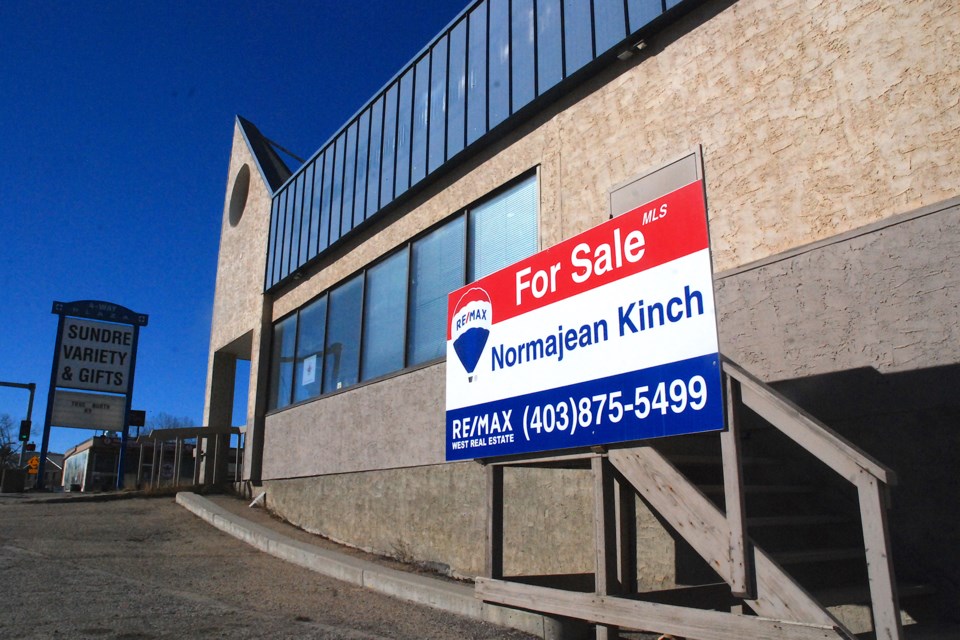SUNDRE — The hurdles and challenges heralded by the pandemic were not enough to hamper the town’s progress.
“Sundre is very, very fortunate — we are experiencing growth like I haven’t seen in the 40 years that I’ve lived here,” Town of Sundre Mayor Terry Leslie said during a phone interview earlier this month.
Statistics compiled and analyzed by the municipality’s economic development officer have shown an increase in building permits, reduced decision-times, as well as declining commercial vacancies, according to a recent press release.
“The Town of Sundre is experiencing the most growth in a generation,” reads a portion of the statement written by Jonathan Allan.
“A combination of new attention to the community through record tourism and building activity has made the (town) busier than ever,” Allan wrote.
With a population of roughly 2,800 within its corporate limits, the town serves a total trade area population of closer to 8,000, which can reach upwards of 12,000 throughout the summer, he said.
“Ongoing beautification and placemaking efforts, extensive awareness-generating promotional campaigns, and reduced red tape and development processes have combined to support growth.”
Further fostering modest growth is a “remarkably diverse economy” with an area that “is home to forestry, construction, oil and gas, agriculture, cannabis, tourism and retail, and a strong public sector presence.”
Additionally, this dynamic economy coupled with a high quality of living has enticed the interest of some developers, he said.
But “it’s the streamlining of development processes that has helped developers take their visions to the next level.”
Downtown commercial vacancies down
Although vacancy rates are always an estimate based on information from the municipality’s geographic information system and file records as well as statistics provided directly by landlords, the figures offer some insight on growth trends. The economic development department began in 2018 tracking vacancy rates by calculating overall available square footage, as opposed to using the number of vacant units, reported Allan.
“The reason for this is because tracking vacancies by the proportion of square footage available is a more precise way of determining commercial activity.”
For example, he said if a large retail store or commercial office with many employees occupies 90,000 square feet out of an available total of 100,000 square feet, with the remaining 10,000 square feet being vacant, smaller individual units of only 1,000 square feet each, the vacancy rate could be grossly misinterpreted as being 91 per cent, if based on the total number of units.
“This would not be a fair representation of reality. It would be more accurate to report it as 10 per cent vacant.”
There of course remains some vacancies in Sundre, but the statistics indicate that the town’s vacancy rate is relatively low, he said.
“And the trend shows a continuing decline.”
Allan reported the estimated average 2019 downtown commercial district vacancy rate was 11.1 per cent, compared with approximately 8.2 per cent in 2020. However, with new development permits that have been issued, the March 2021 vacancy is expected to reach as low as 7.3 per cent, he added.
That percentage, he explained, was calculated based on an available square footage of commercial space estimated at about 22,965 out of a total commercial space of 314,538 square feet.
“From 2019 to today, this translates into Sundre’s downtown commercial vacancy rate having been reduced by an estimated 34.23 per cent. This is a remarkable achievement, particularly during a downturn in Alberta’s oil and gas sector that has combined with a global pandemic ravaging the global economy.”
Despite those difficulties, inquiries continue to increase, and with the pandemic forcing many people to work from home, more are looking to start their own businesses, he said.
“We expect even more development in the year ahead.”
Streamlined development decisions
Facilitating that growth has been recent updates to the municipality’s Land Use Bylaw and the way development decisions are made, a process which has reduced the average length of time taken to issue notices of decision on permitted developments by 41.8 per cent during the years of 2017 to 2020, versus the previous four-year period from 2013 to 2016, said Allan.
“Discretionary notices of decisions have gotten even faster, with decisions being made 62.9 per cent more quickly.”
Between 2017 and 2020, the average number of days taken to issue a discretionary notice of decision was only 6.3 days, as opposed to 17 days in the previous period of 2013 to 2016, he said.
“This represents a whopping improvement of 62.9 per cent,” he said.
“Meanwhile, the average number of days taken to issue permitted notices of decision was only 3.2 days, versus the previous period’s 5.5 days.”
Additionally, he reported that the private sector building permit values have more than doubled on an annual basis.
“Between 2017 to 2020, the average total value of residential, commercial and industrial building permits was almost 104 per cent more than the previous four-year period from 2013 to 2016, coming in at an average of $5.15 million versus $2.53 million (respectively).”
The mayor praised the municipality’s staff for establishing a reputation for bringing businesses and developers into the community, and said that growth offers council the ability to keep taxes lower.



